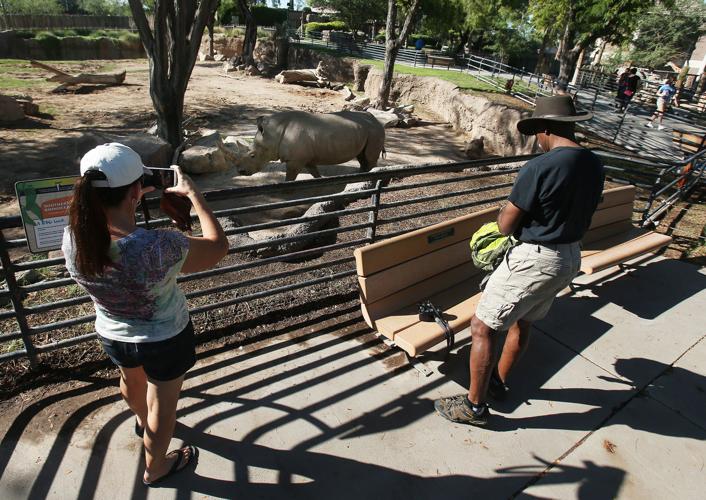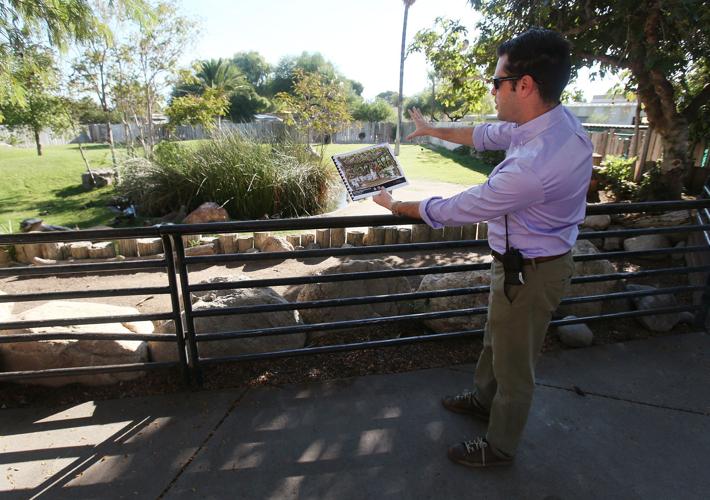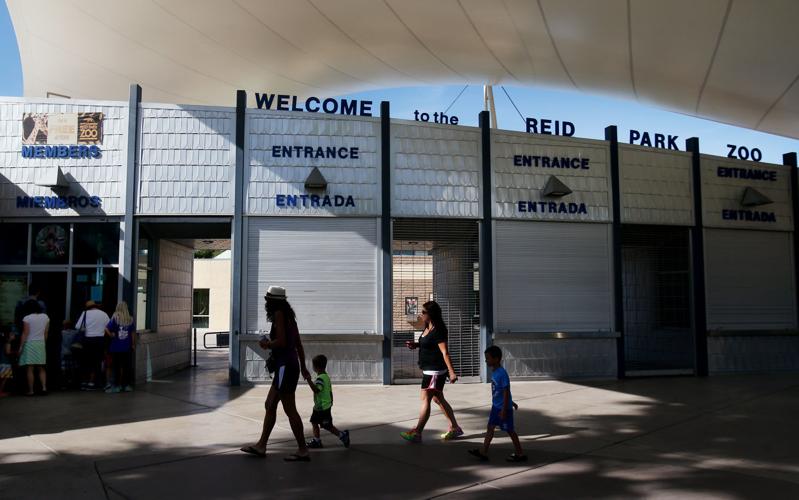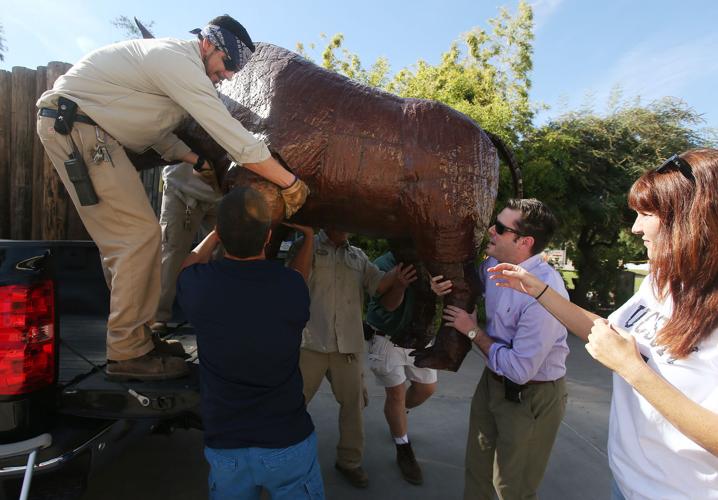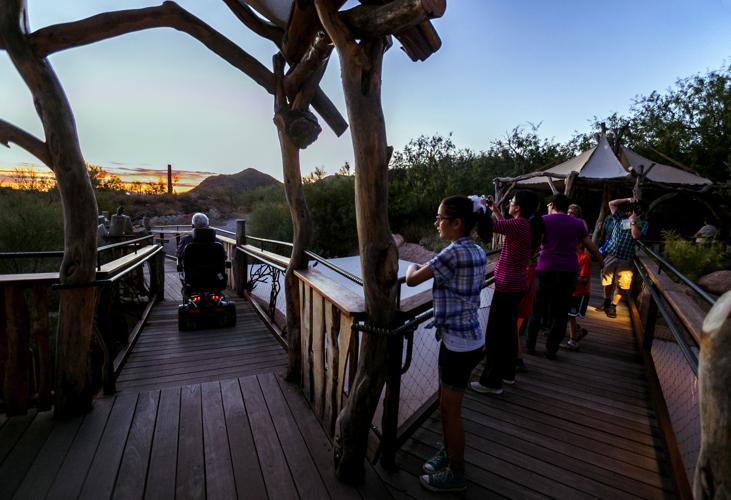Supporters of one of Southern Arizona’s most frequented attractions say it’s ready for an upgrade.
“It’s important to provide a space for families to come and enjoy and have a good time,” said Nancy Schlegel, president of the Reid Park Zoological Society.
Reid Park Zoo is one of 11 projects slated for funding through a $98.6 million bond package that would fund improvements and expansions to several regional tourist attractions.
Listed as Prop. 427: Tourism Promotion on November ballots, the proposal seeks to bolster the estimated $2 billion annual tourism-related regional economy with new and improved amenities.
The county has asked voters to decide a seven-question, $815 million bond program.
The tourism promotions component also would fund improvements to the Pima Air and Space Museum, Arizona-Sonora Desert Museum, the Old Pima County Courthouse and a planned January Eighth Memorial project, among others.
The proposed improvements to the Reid Park Zoo include construction of an African Safari Lodge at the site left vacant when the zoo moved elephants to an upgraded enclosure.
The attraction is envisioned as a rest and recreation site within the zoo with areas for guests to view other animal displays.
Schlegel said the location also would serve as a venue for the zoo’s many public programs and the increasing role it plays as a destination for private and afterhour functions.
The second proposed improvements seek to construct an African wetland exhibit, featuring underwater viewing of pygmy hippos, crocodiles and a new otter enclosure.
Schlegel said the zoo sees about 600,000 visitors each year. Total bond funding for the zoo projects stands at $8 million.
“By and large, the attractions in any great city are public-private partnerships,” said Dan Gibson, director of corporate communication with Visit Tucson.
Visit Tucson is one of many business organizations to issue support for the bond program. It also receives $3.3 million in annual support from Pima County to promote regional tourism.
Projects like the $25 million courthouse restoration and January Eighth Memorial would be assets to the tourism economy but need public support to become a reality, Gibson said.
“Something has to happen with the Pima County Courthouse but it’s not going to happen in just a private way,” he said.
Gibson also said the projects that would receive funding, with the exception of the Temple of Music and Art and Conoa Ranch Museum, have matching fund requirements.
“It’s not free money, it’s money that allows them to accomplish things they might not be able to on their own,” Gibson said.
Schlegel said the Zoological Society has pledged to raise more than $10 million in addition to the bond funds to pay for the zoo projects.
Bond opponents, however, have questioned the need to use public money to support tourist attractions and the many nonprofit organizations that operate them.
“The only things we should be bonding for are things like parks and county-owned buildings, not to fund nonprofits,” said Pima County Supervisor Ally Miller.
Miller opposes all seven bond questions, expressing concern about the county’s tax rate and debt levels.
At the Sept. 15 Board of Supervisors meeting, Miller questioned County Administrator Chuck Huckelberry about providing bond funds to projects overseen by nonprofit groups.
Miller said she was concerned the county had “no teeth” if an operator failed to meet its obligations. Huckelberry said the county could simply terminate any lease and contract with a group if problems arise.
In an interview with the Star, Huckelberry said the county has had long and successful relationships with many of the groups that operate tourist attractions and noted bond funding was not giving a blank check to the groups.
“The improvements to these county projects belong to the public,” he said, noting potential funding recipients like the Pima Air and Space Museum and Arizona-Sonora Desert Museum lease the properties from the county.
Joe Boogaart, with the Taxpayers Against Pima Bonds campaign, said he’s concerned the county and other jurisdictions won’t be able to afford the operations and maintenance costs that come with new bond-funded projects.
“I think it’s time to tackle the deferred maintenance,” Boogaart said.


